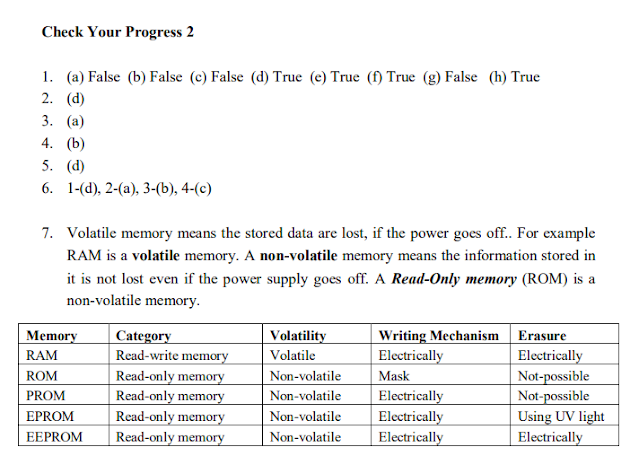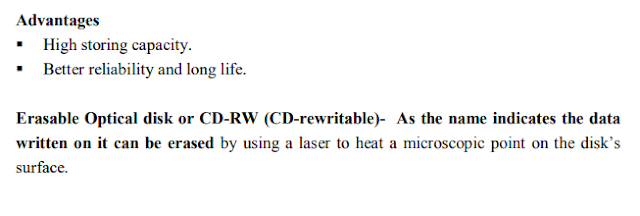3.4 SUMMARY
This unit basically outlines the storage organization, storage devices of different types of memory systems and the importance of the memory hierarchy.
The memory system is categorized according to access time, storage capacity and cost-per-bit of storage.
Based on these criteria memory is broadly categorised into two types:
- Primary memory
- Secondary memory.
All modern computers use semiconductor memory as its main memory (or primary
memory). Semiconductor memory is known as Random access memory (RAM).
Although it is a very fast memory but it is very expensive. Thus semiconductor (primary)
memory of today‟s computers is not sufficient, since it has very limited capacity. Thus
there is a need of an additional memory, which should be inexpensive, non-volatile in
nature and having large capacity. Magnetic (secondary) memory is a permanent, non-volatile type memory. In this unit we have discussed the two types of magnetic memory
namely magnetic disks (i.e. ,Hard-disk and floppy disk) and magnetic tapes. Magnetic
disks are the most common form of secondary storage because they provide fast access
and high storage capacities at a reasonable cost.
Another type of secondary storage is Optical memories or Optical disks. These devices
provide a huge storage capacity (up to 20 GB), at a lower cost. Information is written to
or read from an optical disk using a laser beam. An optical disk is relatively inexpensive,
and has a long life of at least 15 years. Since the read/write head does not touch the disk
surface, there is no problem of head crashes. The main draw back of the optical disk
system is its slow average access time. Many software companies offer both operating
system and application software on CD-ROM today. This technology has been the main
catalyst for the development of multimedia in computing because it is used in multimedia
external devices such as video recorders and digital recorders (Digital Audio Tape) which
can be used for multimedia systems.
In this unit, we have discussed the various types of storage devices used by the computer
system. A cost effective technique for the design of large computer systems is the use of
a hierarchy of memory technologies. The overall goal of Memory Hierarchy is to obtain
the highest possible access speed while minimizing the total cost of the memory system.


















0 Comments